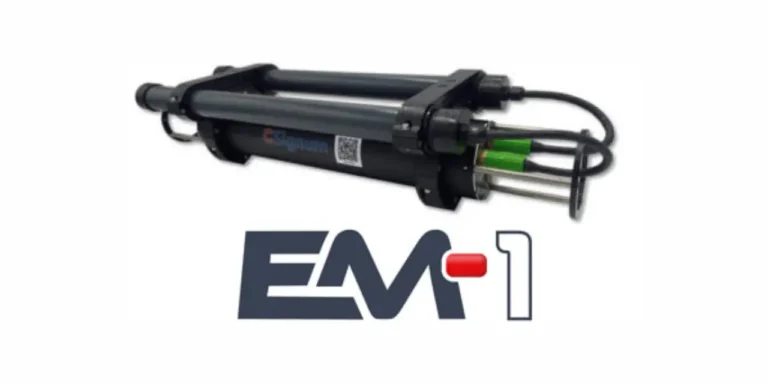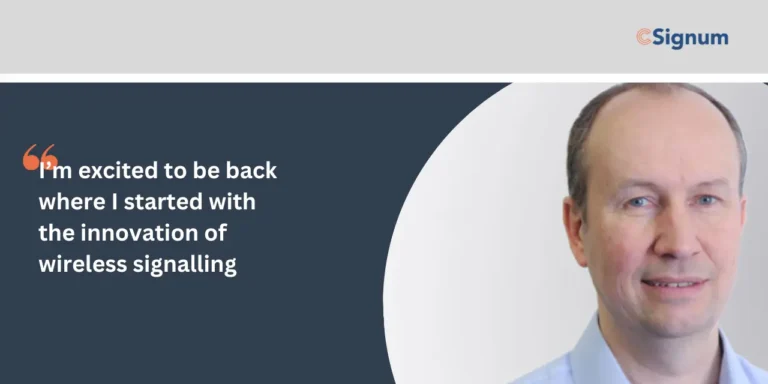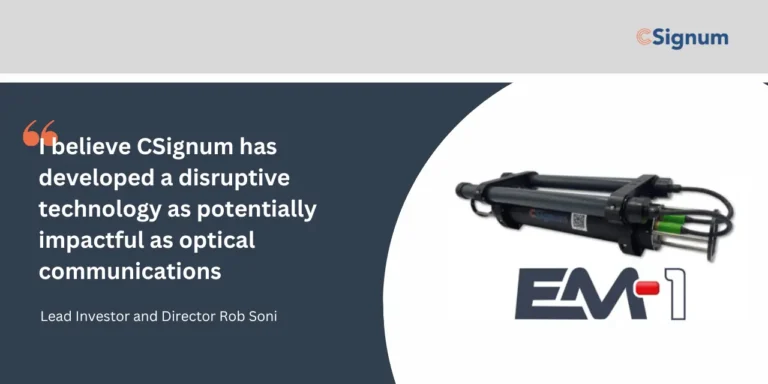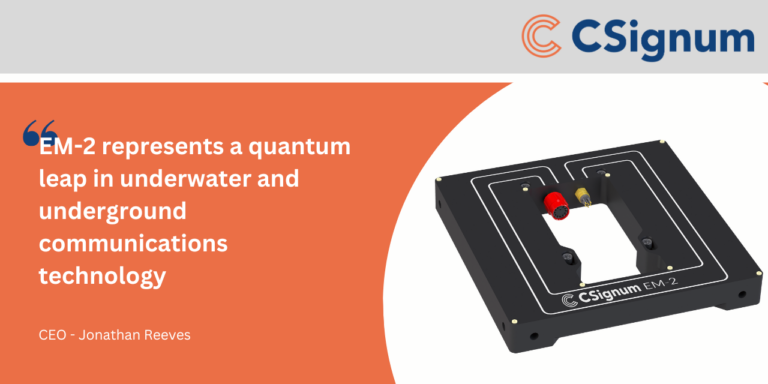
The EM Technology for Monitoring Mooring Line Fatigue Saves Power, Automates Data Transmission, Mitigates Risk, and Improves Reliability
BATHGATE, SCOTLAND – June 10, 2021 –. CSignum Ltd., the global leader in smart communications solutions, subsea asset digitization, and actionable insights for ocean industries; announced today the testing of the prototype solution developed with Tfl Marine as part of the Floating Wind Technology Accelerator Competition (FLW TAC) was successful. Tfi have developed a unique Sea Spring to reduce snatch and fatigue loads on floating offshore wind structures. The Sea Spring incorporates CSignum’s EM low frequency subsea wireless communication system which enables real-time autonomous full life fatigue monitoring. The Tfi Sea Spring design includes piezoelectric ceramics embedded within the system to generate power for the CSignum wireless monitoring system. The tests, involving the TfI Sea Spring and CSignum EM technology, took place under simulated real-world load conditions at Exeter University’s DMaC test rig. Funded by the Scottish Government and managed through the Carbon Trust’s Floating Wind Joint Industry Project (FLW JIP), the FLW TAC awarded enabled CSignum and TfI Marine to manufacture and test their prototype solution to overcome the challenges of monitoring and inspection of mooring lines which have negatively impacted the commercialization of floating offshore wind.
Today’s CSignum announcement comes as Scotland prepares to host COP26 later this year and the Carbon Trust publishes the results of the floating wind technology development projects. In March 2020, CSignum and TfI Marine were recognized for their proof of concept: a solution which integrates mooring load sensing, power generation and wireless subsea communications into an existing spring to enable autonomous full life fatigue monitoring. Incorporating monitoring equipment into the mooring line spring reduces the need for physical inspection of mooring lines and enables a risk-based approach to monitoring. The spring also acts as a dampener on mooring lines and the monitoring equipment is powered by movement of the spring, using a piezo-electric generator, which removes the need for an external power source.
CSignum provided the low frequency wireless communications solution known as EM technology, which uses variable low frequency and ultra-low power consumption for subsea and bi-directional “through the water-air boundary” data transmission. EM technology connects to most subsea sensors using standard communications interfaces. In this instance, the transmitter and data logger are below the water, integrated onto the spring, which is attached to the mooring line, automatically transmitting to a receiver mounted on the wind-turbine floating platform. EM technology sends data more consistently and reliably in turbid, low visibility and choppy waters than other wireless solutions or fault-prone cable systems.
Hannah Evans, Manager, Carbon Trust said: “We are really pleased to see the progress CSignum and TfI Marine have made in developing their novel mooring line monitoring system over the last year. This project has demonstrated the value of international collaboration between Scotland and Ireland to develop new technologies, and address challenges faced by the floating wind industry both in managing mooring line loads and monitoring mooring lines safely and cost effectively. We look forward to seeing this technology progress.”
“Existing load measurement solutions normally consist of a wired strain gauge on a load pin somewhere on the mooring line and wherever you place that pin, it is susceptible to failure,” said Noel Halloran CEO at TfI Marine. “The TfI Sea Spring provides CSignum with the ideal mounting platform for their technology, which provides real time-data transmissions on strain loads, battery life and power supply.”
“We worked closely with TfI in their labs to test the feasibility of the integration of the CSignum EM Modem with the Sea Spring and then fabricated and tested a proof of concept under simulated real-world load conditions at Exeter University’s DMaC test rig and the University of College Cork’s LIR National Ocean Test Facility,” said Richard Adams, Sales Director, at CSignum. “Now, instead of operators having to do costly maintenance on mooring lines and receiving infrequent updates on their operation status, we can let them see the actual data in real time, so they know when maintenance or replacement is warranted, reducing OPEX and driving down the cost of energy.”
CSignum is honored to have received this recognition from the Carbon Trust and the FWP JIP. Our aim is to listen to the needs of the industries we serve and we are proud that we have co-developed a practical solution for wind farm operators. This is a real-world example which underscores our mission: to provide dynamic data transmission for ocean monitoring, enable data-driven environmental management and accelerate sustainable ocean development.
ENDS
Notes to Editors
About CSignum, Ltd.
CSignum is the only wireless communications provider that enables the first automatic and reliable transmission of data through and across the water-air boundary, water column, seabed and subsea structures using EM technology. Our patented communication, monitoring and navigational platform and solutions help aquaculture, ocean observing, offshore wind, and oil and gas industries automate and reliably transmit data as they digitally transform and scale remote communications systems for greater sustainability, increased performance, and preparedness for unforeseen events.
CSignum was founded in 2020 to engineer a smarter planet by optimizing ocean health for the sustainable use by all. The company is headquartered in Bathgate, Scotland.
About TfI Marine
Technology from Ideas (TfI) supply the commercial mooring market with innovative mooring components which reduce the loads experienced by the mooring system. Their polymer mooring spring halves the maximum loads on a mooring line, reducing the size and cost of mooring systems anywhere in the ocean. It also reduces the fatigue experience d by the mooring line extending mooring system lifetimes. TfI are based in Dublin, Ireland, with a primary focus on the global floating offshore wind and aquaculture markets.
About TfI Marine/CSignum’s Floating Wind Technology Acceleration Competition (FLW TAC) Solution
TfI and CSignum demonstrated a solution which integrates mooring load sensing, power generation and wireless subsea communications into an existing spring to enable autonomous full life fatigue monitoring. The spring also acts as a dampener on mooring lines and is powered by movement of the lines (using a piezo-electric generator).
About the Floating Wind Technology Acceleration Competition (FLW TAC)
The Floating Wind Technology Acceleration Competition (FLW TAC) was designed and run by the Carbon Trust’s Floating Wind Joint Industry Project, a world-leading collaborative floating wind research and development initiative between the Carbon Trust and 15 leading international offshore wind developers. The competition, which received funding from the Scottish Government, was designed to find innovations with the potential to address four key industry challenge areas, that need to be overcome to commercialise floating wind: monitoring and inspection, mooring systems, heavy lift maintenance and tow to port maintenance.





